MARCH 10, 2025: We woke up today to better weather. It was still very cloudy, but it felt a bit warmer and the rain seemed to have stopped. Today we were planning to go to Savoca, a small hilltop village about a ½ hour drive north of Taormina.
Savoca was home to a significant Jewish community from at least the 15th century. Historical records from 1409 and 1470 indicate that approximately 350 Jews, comprising about 50 to 60 families, resided in Savoca, accounting for roughly 8% of the town’s population at the time.
The Jewish residents were primarily engaged in professions such as weaving, dyeing, blacksmithing, silk production, and the cultivation of sugar cane and vines. Unlike other Sicilian Jewish communities, the Jews of Savoca did not live in a segregated quarter but were dispersed throughout the town, often living alongside their Christian neighbors. The community maintained a synagogue in the town center.
The synagogue in Savoca, known as the Mischita, existed as early as 1408. In 1470, the Viceroy of Sicily ordered its confiscation, claiming that Jewish rituals disturbed nearby Christian sites. The building was then sold and converted into a private residence. Today, its ruins are the only remnant of Savoca’s once-thriving Jewish community. We were going to Savoca to look for the synagogue remains.
To reach the village, we took a local road through the coastal towns. The drive was challenging—narrow roads with two-way traffic, pedestrians walking in the streets, and motorcycles weaving past from all directions.
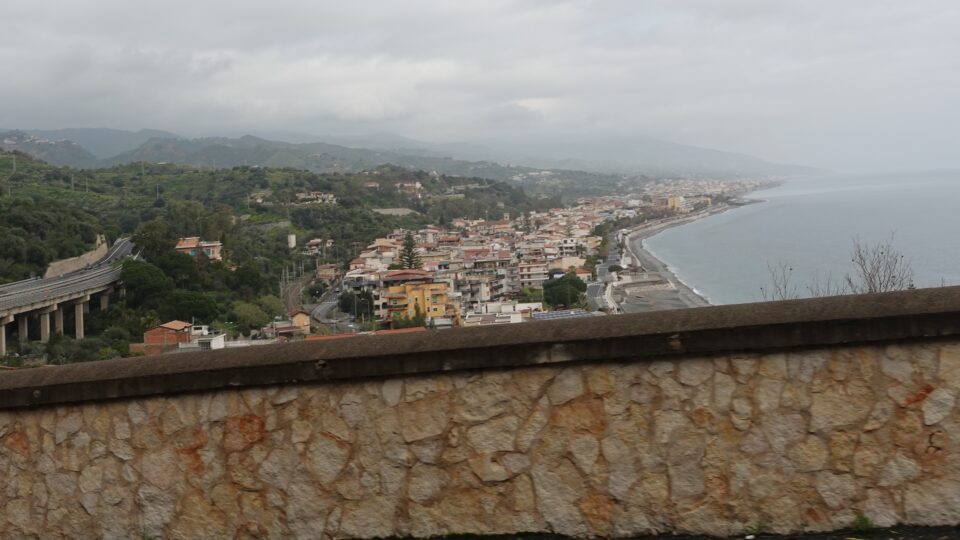
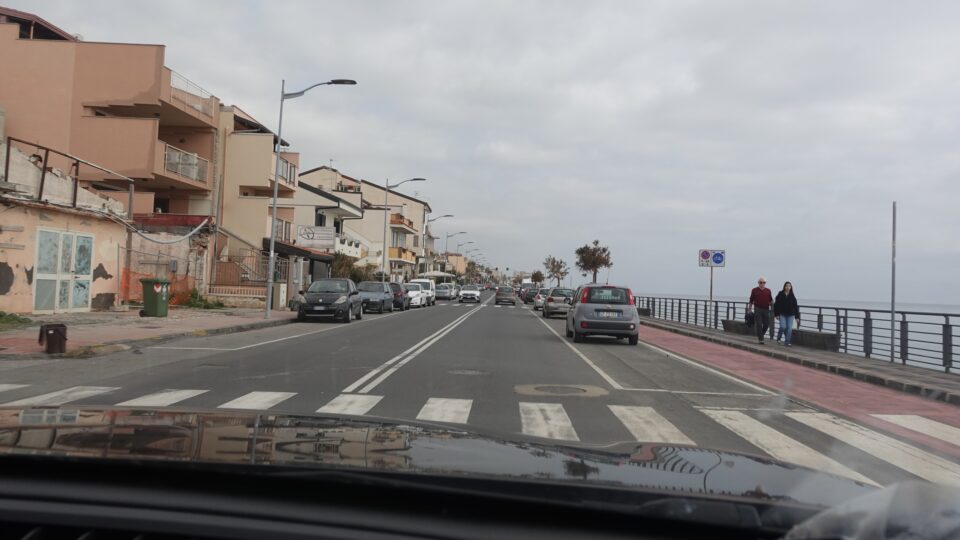
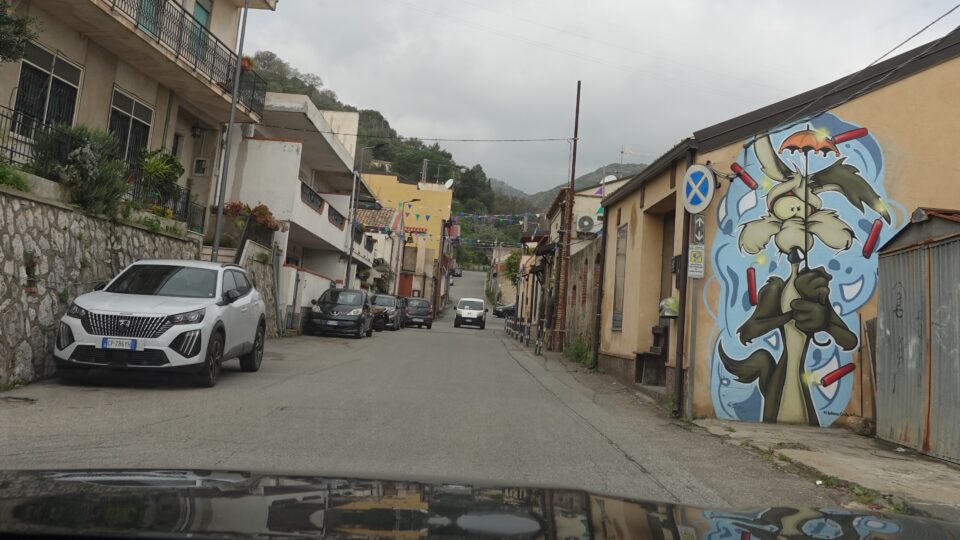
Once we left the coast, we began the steep ascent along a winding road with spectacular scenery. At one point, as we rounded a curve, we suddenly had to steer around an old man picking herbs on the side of the road.
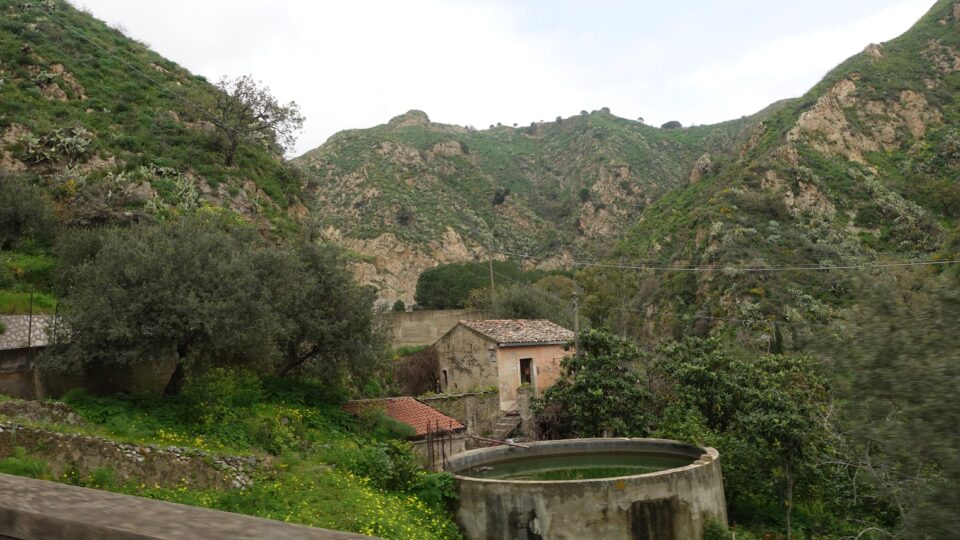
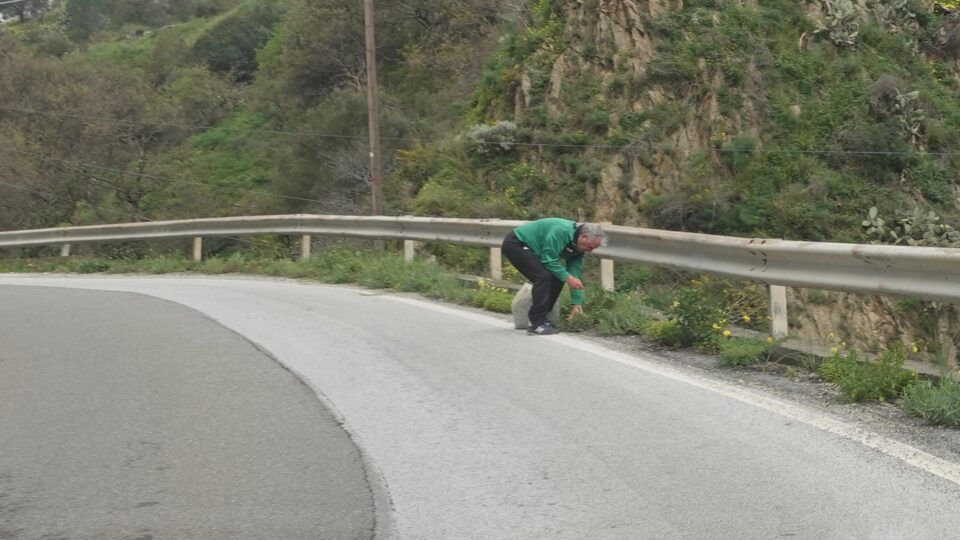
Once in Savoca, we found a small, charming town perched high in the hills, offering magnificent views.

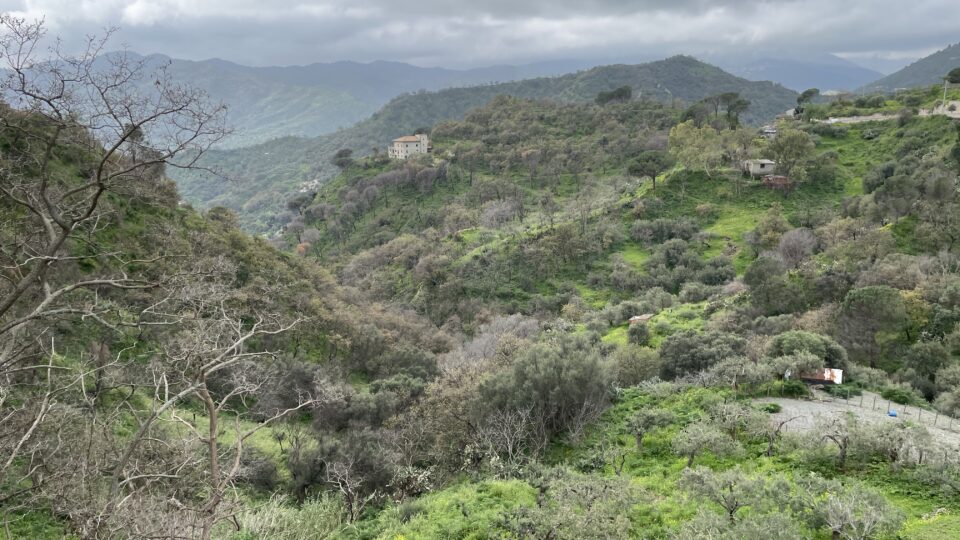
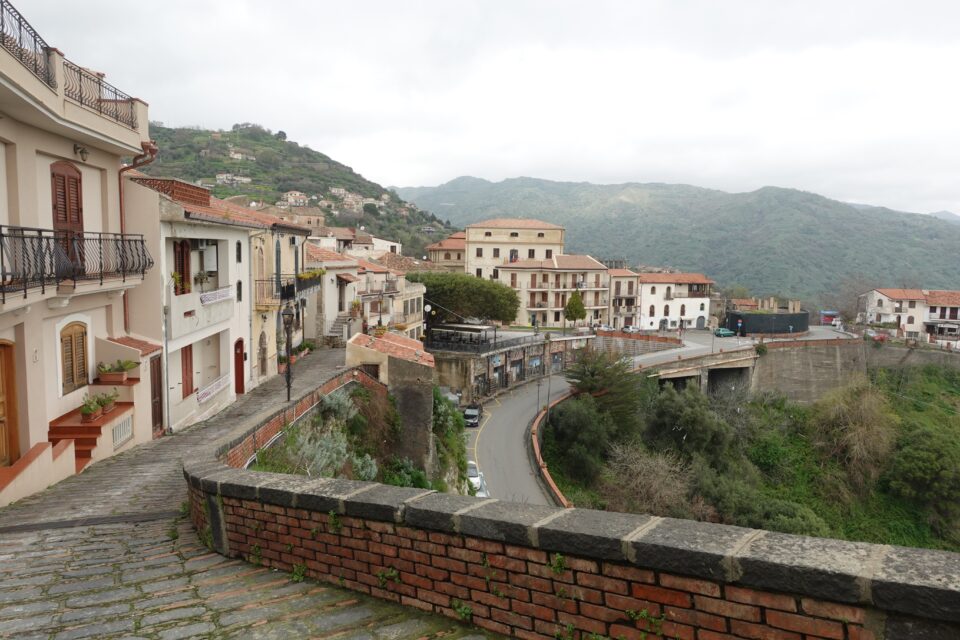
The remains of the synagogue were indicated on the town map. To reach the synagogue, we walked up the hill on a stone paved road, passing through the town gate, known as The City Door.
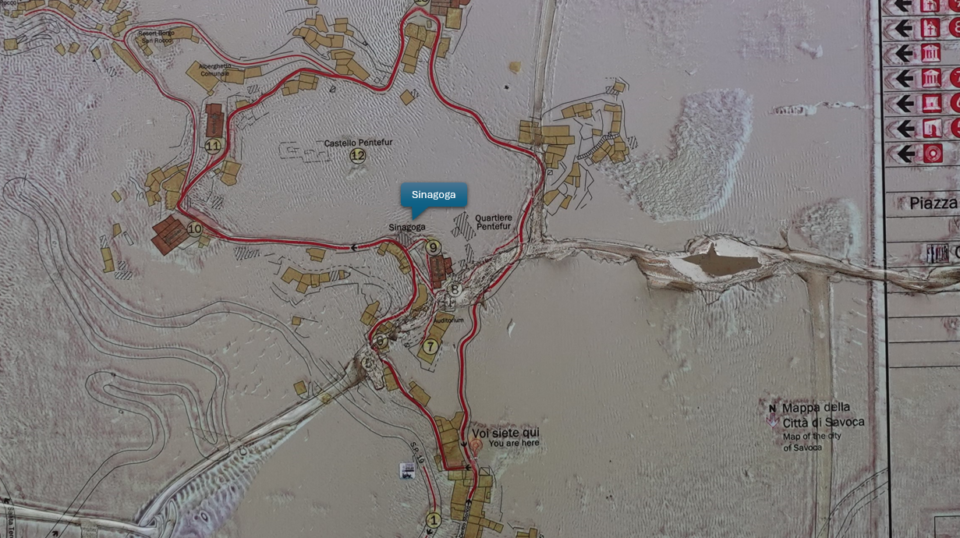
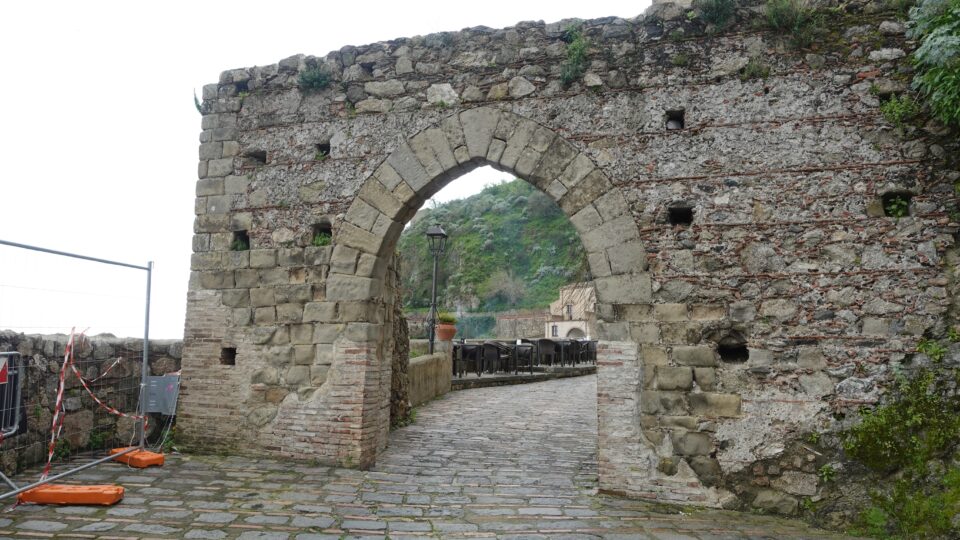
We easily found the site of the former synagogue. Today, all that remains of the exterior are three stone arches and a side window. The interior is covered by overgrown weeds.
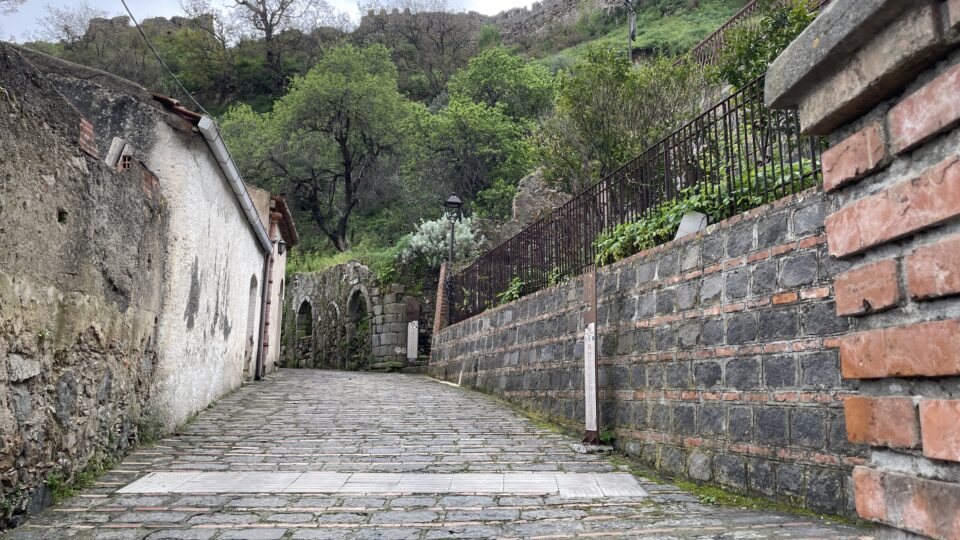
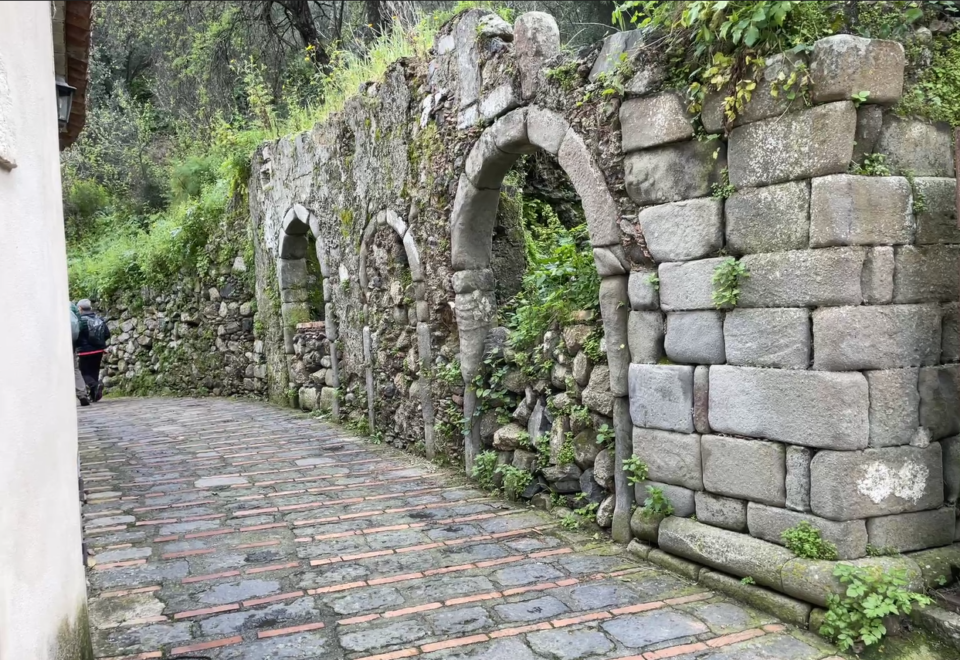
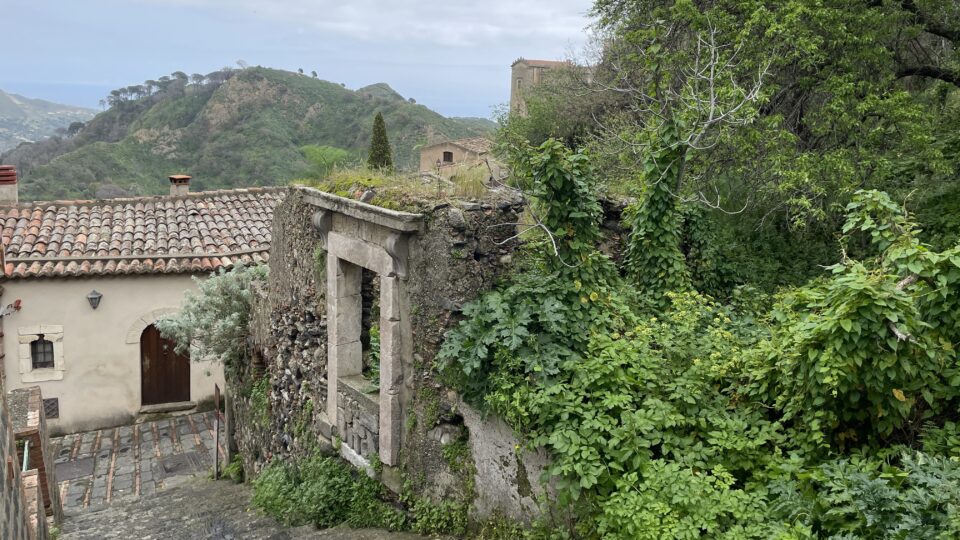

Although other landmarks in the town had explanatory signs next to them, the synagogue ruins had none. However, etched into the street in front of one of the arches was a memorial to Anne Frank, designed to resemble a stumbling stone. In our research, we could not find any explanation of why this was there. What is the connection? All I can think of is that the person responsible knew that the synagogue is Jewish and Anne Frank is Jewish. A mystery.
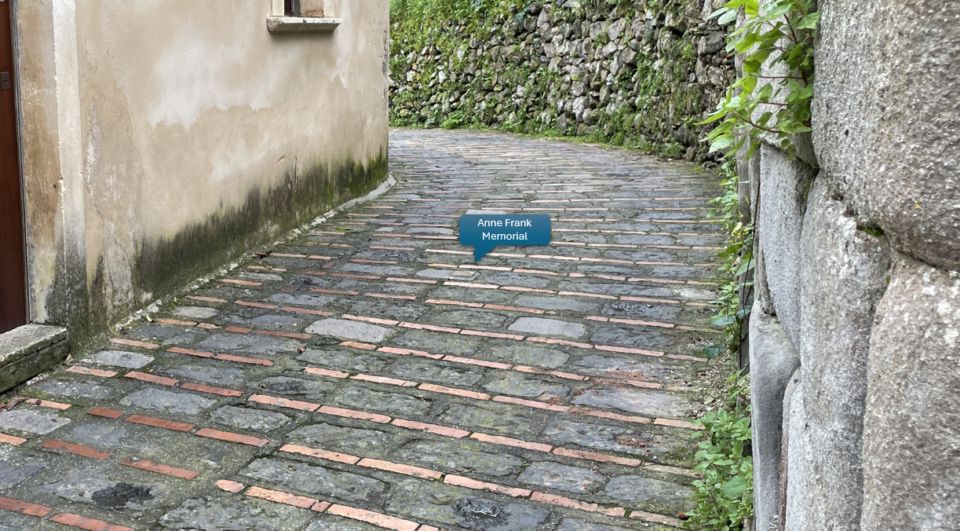
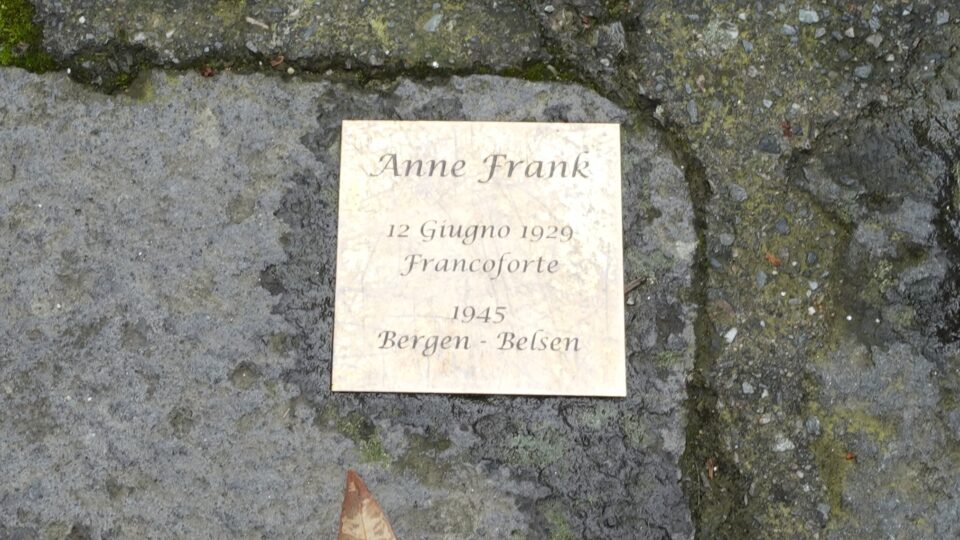
While searching for the synagogue’s location on Google Maps, I noticed an icon for the Godfather Wedding Walk right next to it. It turns out that Savoca is a popular destination for Godfather fans, as it was one of the film’s primary shooting locations.
Key sites in Savoca featured in The Godfather include Bar Vitelli, where Michael Corleone meets Apollonia’s father to ask him for permission to court his daughter. Today the bar still operates and displays memorabilia from the film.
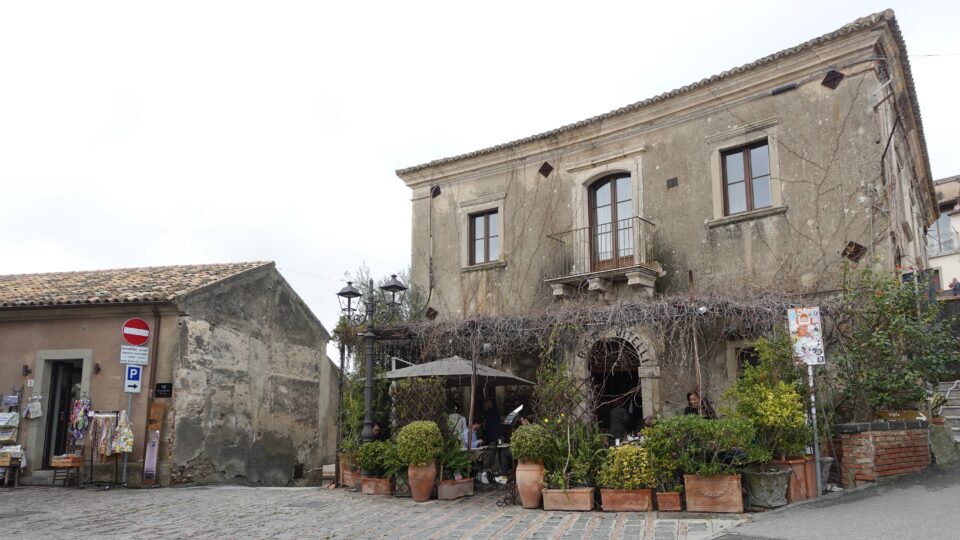
The Church of San Nicolò is the setting for Michael and Apollonia’s wedding, followed by a procession through a village street—the same street where the remains of the synagogue stand today.
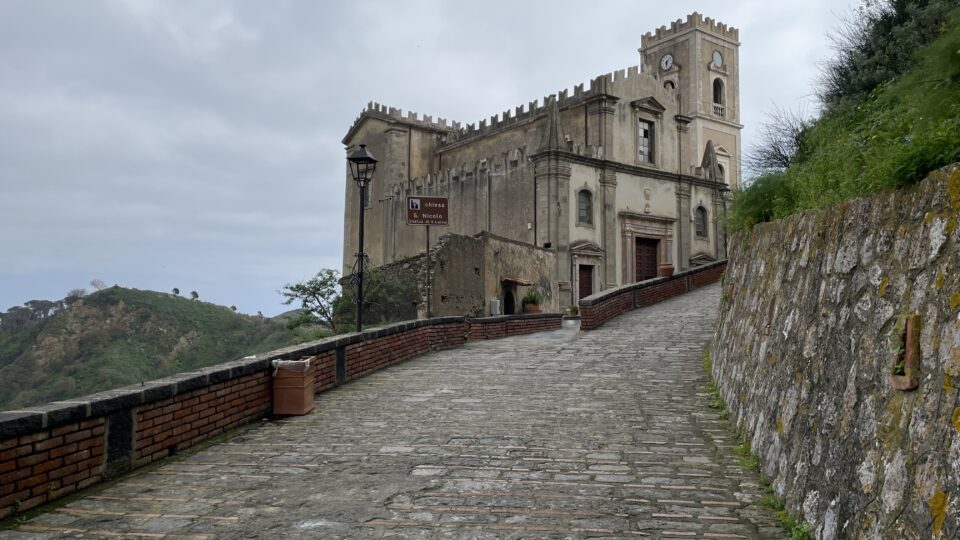
A tribute to director Francis Ford Coppola is located outside Bar Vitelli, featuring a plaque and a bronze bust honoring his role in bringing international recognition to the town.
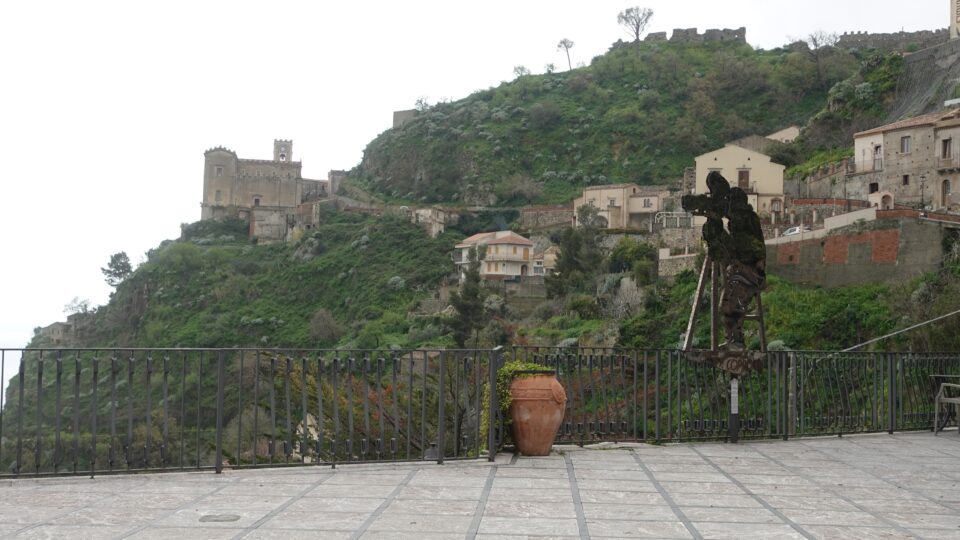
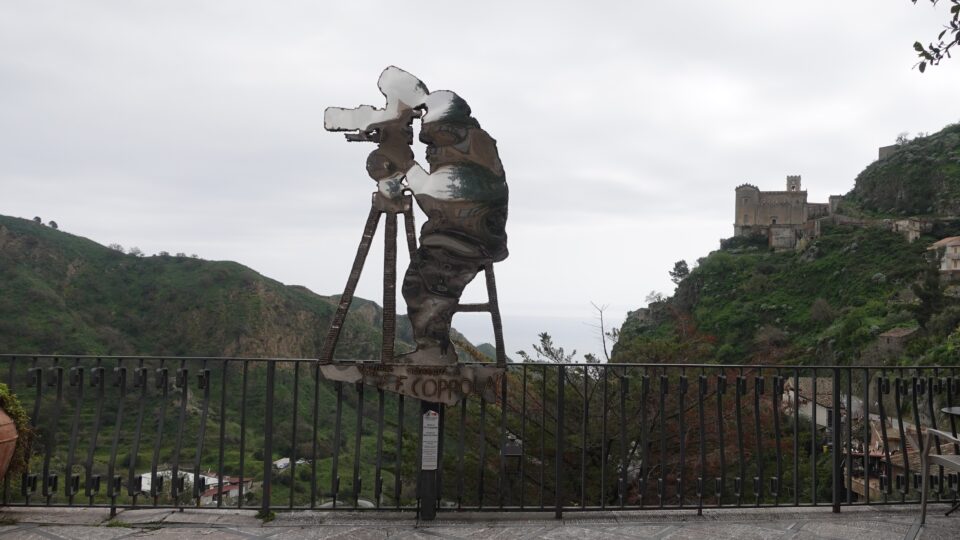
In the Taormina library’s map of Jewish sites in Sicily from 1492, Savoca is noticeably absent. Instead, in the area where it should be, the map lists ‘S. Lucia.’ Odd. A search on Google Maps reveals no town by that name or anything similar nearby. However, inside the Church of San Nicolò, a sign identifies it as ‘The Church of San Nicolò / Santa Lucia,’ hinting at a possible connection between Savoca and S. Lucia. Did the mapmaker mistakenly call Savoca, Santa Lucia? Another mystery.
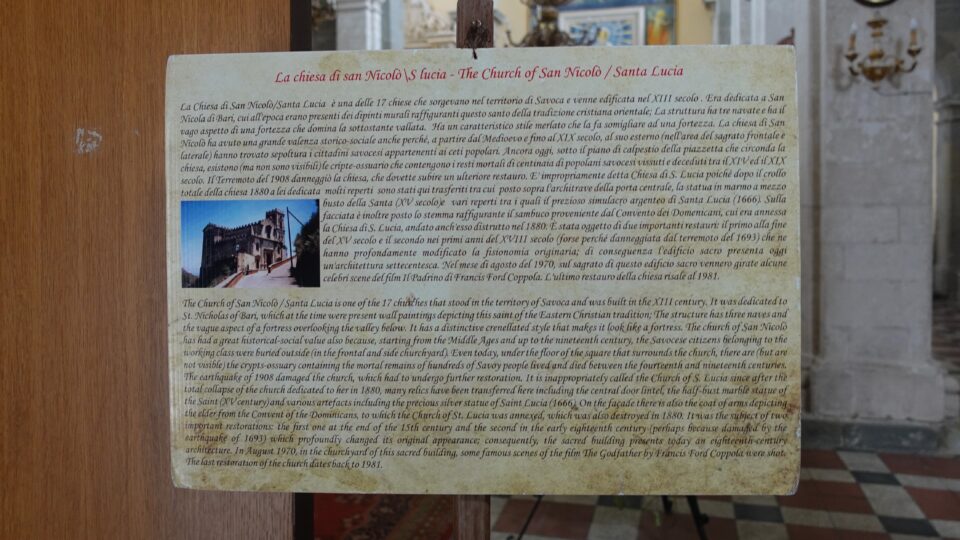
After our visit to Savoca, we returned to Taormina with enjoyable memories—and a few unsolved mysteries to ponder.
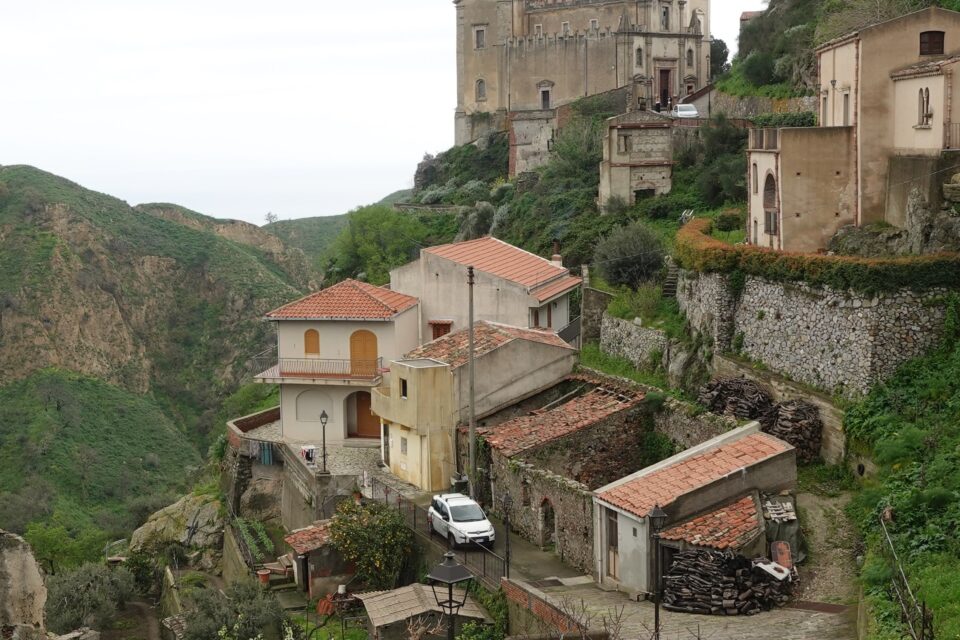
So interesting…and very picturesque!